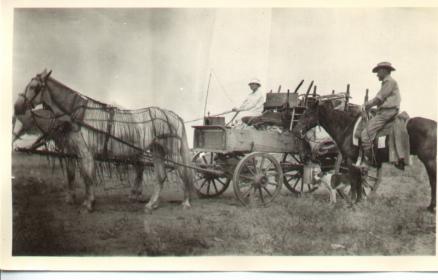This subject comes up often, so I thought I would add my thoughts on it
Yes, the old Masters have much to offer, be it dressage or old Vaquero training, BUT, I differ when it comes to those old Masters always touted as the supreme example of Horsemanship , and their methods taken as the "Bible’ of horse training
Sometimes traditional is just that-tradition, without anyone ever questioning methodology or maybe considering that there might be even better ways_ie advancement versus stagnation
Yes, the Old Vaquero way took the time to produce a bridle horse, one ridden in a Spade bit with great finesse
However, it is not true that Old Vaquero traditional training was always kind, and soft, and in fact, many times quite harsh
Here is a link to Shiela Varian and her thoughts on training a bridle horse today, versus in those by gone days
Check out how doubling was done in those days
Read Ed Cornell’s book on Hackamore Horsemanship, and you will see some pretty harsh techniques were used to produce that Bridle horse
Yes, esp western, we rush that training program , esp on show horses, having three year olds, for example, up in the bridle running reining patterns and all the elements that entail, BUT, to always suggest that in the good ole days horse training was kinder, more exact, and the ultimate example, in my books, doe snot hold up at all times.
Tying a horse between two pillars, using a whip to teach him to trot in place (dressage ), again is 'un natural, every bit as show ring western pleasure gaits. Ever see a horse in the field reve , like a car being gased while in park???
Airs above ground might have application in war, but now, unless you want your horse to kick in your neighbor’s head, not much use
True horse training really evolved when the nature of the horse was taken into account, communicating with the horse versus forcing the horse. I.m not going to call it 'natural Horsemanship, as good horse training programs always combined some good natural horsemanship in their methods , before a label was ever applied.
http://www.horsechannel.com/western-horse-training/vaquero-way-17722.aspx


